Introduction
The identification and diagnosis of autism spectrum disorder (ASD) rely on detailed diagnostic criteria that offer a consistent approach to recognizing the distinctive traits of ASD. These criteria are vital for ensuring accurate diagnoses, which open the door to tailored resources and support systems. The prevalence of ASD is significant, affecting as many as 1 in 36 people, according to the CDC.
Early and accurate diagnosis can be life-changing, providing interventions that foster full and enriching lives. Despite the absence of a single known cause for autism, research points to a combination of genetic and environmental factors. Dispelling myths and focusing on evidence-based factors is crucial.
The diagnostic process is evolving, with ongoing discussions about refinements in the diagnostic criteria, including a broader array of possible characteristics for ASD. Advanced technologies like machine learning are also being explored to enhance diagnosis. The synergy of parental insights, professional evaluations, and cutting-edge technology is charting a new course in understanding and supporting the diverse experiences of those on the autism spectrum.
The Role of Diagnostic Criteria in Autism Diagnosis
The identification of autism spectrum disorder (ASD) hinges on detailed diagnostic criteria that offer a consistent approach for recognizing the distinctive traits of ASD. These criteria are vital for ensuring that individuals receive accurate diagnoses, which is the gateway to accessing tailored resources and support systems. The American Psychiatric Association's Diagnostic and Statistical Manual (DSM-5) outlines specific behavioral signs, including persistent challenges in social communication and interaction across various contexts, as well as restricted, repetitive patterns of behavior or interests.
Notably, the prevalence of ASD is significant, with current estimates suggesting that it affects as many as 1 in 36 people, according to the CDC. Early and accurate diagnosis can be life-changing, opening the door to interventions that foster full and enriching lives. Despite the lack of a single identified trigger for the condition, studies indicate a mix of genetic and environmental elements, with observable discrepancies in brain structure and function via brain scans. It's essential to debunk misconceptions such as the correlation between vaccines or parenting styles and the condition, emphasizing instead on evidence-based factors.
Emerging discussions in the clinical domain are advocating for refinements in the diagnostic process. The ICD-11, for instance, introduces a broader array of possible characteristics for ASD, although this inclusivity raises questions about the specificity and clinical utility of such criteria. The shift toward a more subjective understanding of ASD in terms of personal identity rather than strictly observable behaviors calls for ongoing dialogue and research to fine-tune diagnostic practices.
With the advent of advanced technologies like machine learning, new avenues for enhancing diagnosis are unfolding. Research is exploring how these tools can support the diagnostic journey, underscoring the significance of early and precise identification in improving the quality of life for individuals with ASD and their families. The synergy of parental insights, professional evaluations, and cutting-edge technology is charting a new course in understanding and supporting the diverse experiences of those on the autism spectrum.
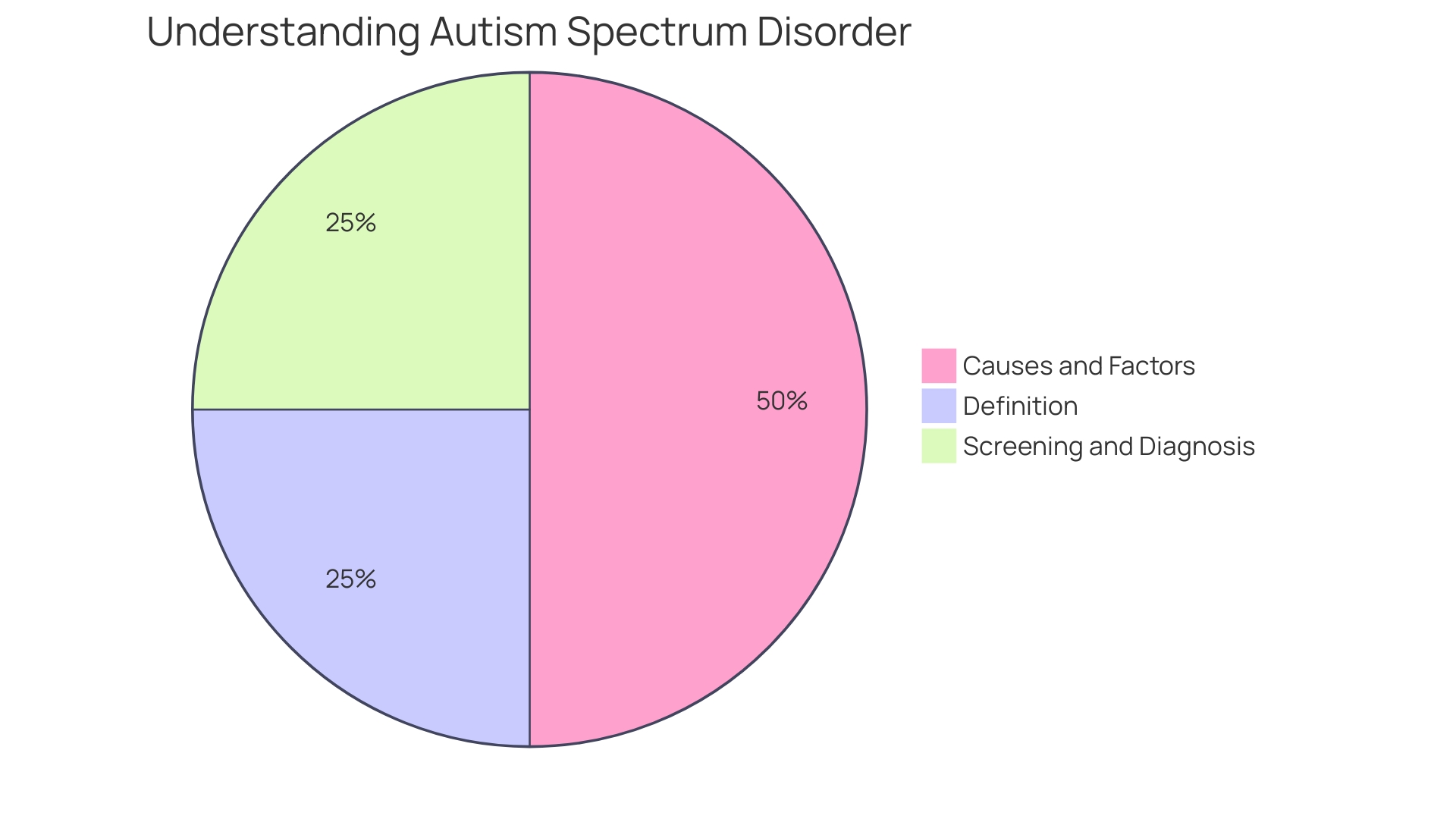
Key Components of Autism Diagnostic Criteria
Autism spectrum disorder (ASD) is a complex condition characterized by a range of symptoms that can greatly affect communication and behavior. These symptoms include persistent differences in communication, challenges in social interactions across various settings, and restricted, repetitive patterns of behavior or interests. For example, people with ASD may display repetitive movements, have a strong preference for routines, or show intense interests in specific topics.
The diagnostic criteria for a certain developmental disorder, as outlined in the American Psychiatric Association's Diagnostic and Statistical Manual (DSM-5), emphasize these core characteristics. However, diagnosing ASD can be intricate, given the condition's heterogeneity and the overlap with traits of other mental disorders. The International Classification of Diseases (ICD-11) notes that ASD encompasses a broad spectrum of behaviors and experiences, which may not always be apparent through direct observation. This has led to a debate around the clinical utility of current diagnostic approaches, which sometimes rely on subjective assessments, such as a person's sense of identity or retrospective analysis of symptoms.
Recent research has demonstrated that people with ASD may perceive and convey emotions differently, for example in the subtleties of a sincere versus a simulated smile. This highlights the importance of considering nuanced social communication cues in the diagnosis of individuals with autism spectrum disorder and underscores the need for precise and sensitive diagnostic tools.
Current statistics suggest that up to 1 in 36 people may fall within the spectrum of autism. With such prevalence, it is crucial to acknowledge that the condition manifests in diverse ways and to varying degrees. Early diagnosis and intervention are crucial, as they provide access to resources and support that enable individuals with the condition to lead fulfilling lives. However, it is also recognized within the autistic and neurodivergent community that self-diagnosis is valid and accepted, especially considering the difficulties and constraints in the medical testing framework for individuals on the autism spectrum.
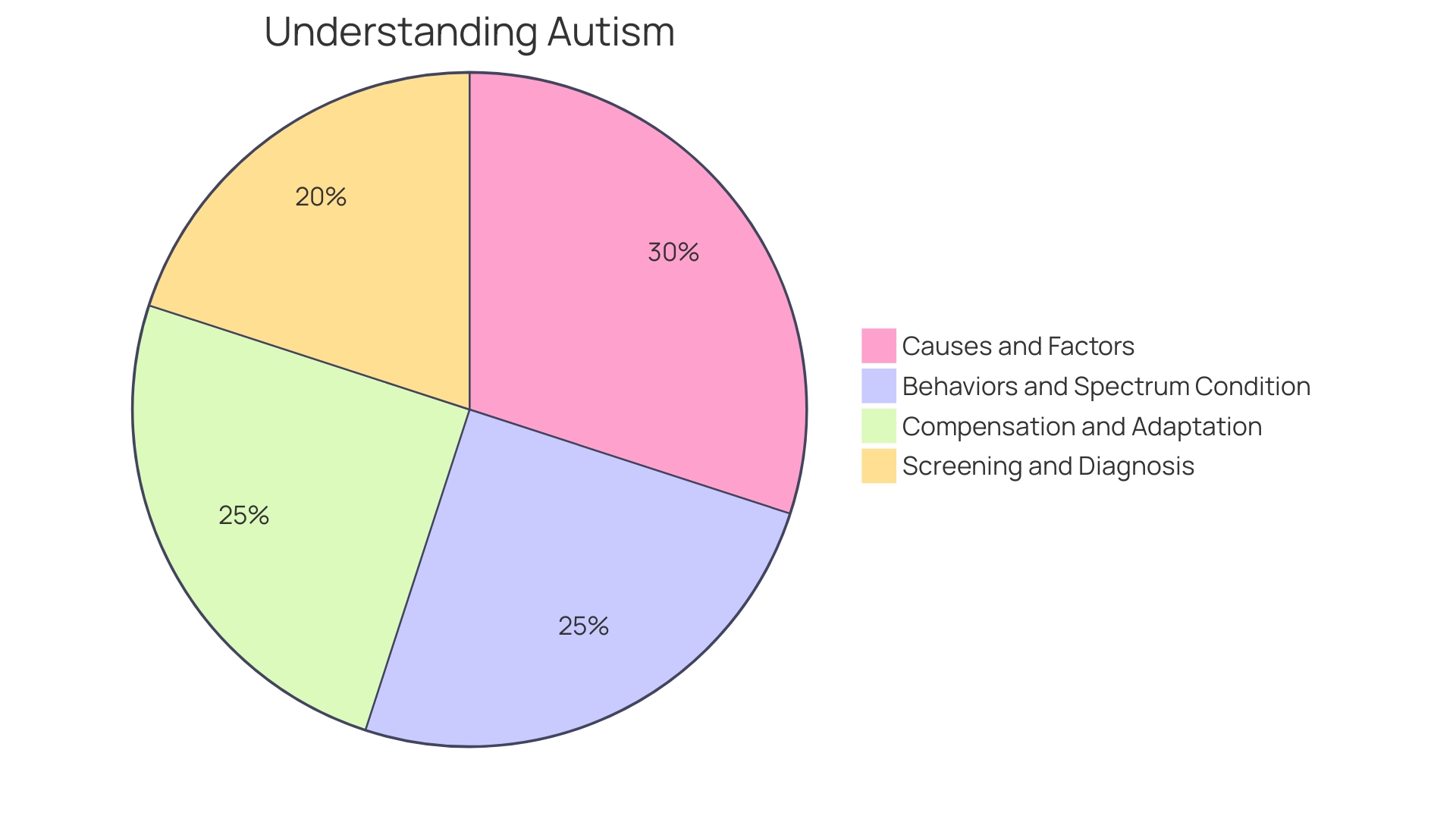
Social Communication and Interaction
When understanding the diagnostic criteria for autism, a key focus is on interpersonal communication and interaction. This includes the aptitude for reciprocal social-emotional exchanges, the ability to comprehend and use nonverbal communication, and the capability to form and sustain relationships. Early research suggests that from birth, infants are naturally responsive to stimuli related to human interaction, displaying a keen interest in faces and movements, a cornerstone for later development. However, for autistic children, this inherent attention to interpersonal interactions often diverges from typical patterns.
Studies, including those by the University of Geneva, have observed that autistic children develop unique attentional preferences rather than following the typical trajectory. Such findings emphasize the importance of early intervention to foster attention, potentially realigning developmental pathways to mirror those of their peers more closely.
The challenge for many people with autism lies in societal misunderstandings and the undervaluation of their unique communication styles. These differences can manifest in varied ways, such as difficulties in grasping another person's perspective or in conveying personal experiences. Acknowledging and utilizing the communicative abilities of each person, whether through augmentative and alternative communication techniques like PECS or organized discussions, can result in improved information sharing and emotional expression.
Research has also investigated the intricacies of authentic and staged smiles, examining how they affect interactions. For people with autism, understanding these subtle signals can be especially difficult due to variations in processing interpersonal information, which might lead to misinterpretations in interpersonal situations.
The necessity for tailored support is further highlighted by the experiences of autistic parents navigating support systems for their autistic children. These parents often report systemic issues instead of personal shortcomings, highlighting the importance of advocacy in obtaining the appropriate support.
Essentially, grasping the impact of autism on social communication is not just about acknowledging the challenges but also about appreciating the strengths and distinctiveness of individuals with autism. By doing so, we can create environments that are more inclusive and supportive, allowing for richer, more meaningful relationships.
Social-Emotional Reciprocity
Emotional reciprocity is a cornerstone of human connection, encompassing the natural exchange of emotions, interests, and experiences in interpersonal settings. It's the harmonious dance of interaction where one's feelings and responses are intertwined with another's. For people on the autism spectrum, maneuvering this complex interpersonal interaction can be especially difficult. The ability to predict and understand the emotional transitions in others, a skill that typically develops through personal emotional experiences and interpreting external cues, may be less intuitive for those with ASD. Research shows that people without neurodevelopmental conditions frequently form 'thin-slice judgments' relying on subtle cues like nonverbal communication, facial expressions, and eye contact. These rapid assessments can lead to a reluctance to engage with people exhibiting atypical behaviors, which can significantly impact the success of autistic adults in their social interactions. Such challenges can lead to increased vulnerability, particularly for autistic women who may struggle with interpreting unspoken cues and face unique risks in their relationships.
Understanding the dynamics of social-emotional exchange is crucial, not just for the diagnosis and support of people with ASD but also for fostering a more inclusive society. Empirical research highlights the significance of this comprehension, with one study involving 65 participants from adult education programs at two day centers for autism in Spain, emphasizing the necessity to cultivate communication skills. The emotional well-being of these individuals is often directly influenced by their interpersonal experiences, with unfavorable interpersonal evaluations contributing to feelings of exclusion, which can worsen mental health problems such as depression and anxiety. This highlights the necessity for tailored support and training, particularly for autistic women, to navigate the social landscape safely and positively. Indeed, the story of a Colorado father who founded a trade school for young adults with developmental challenges, where graduates secure jobs as skilled tradespeople, exemplifies the potential for success when appropriate support structures are in place.
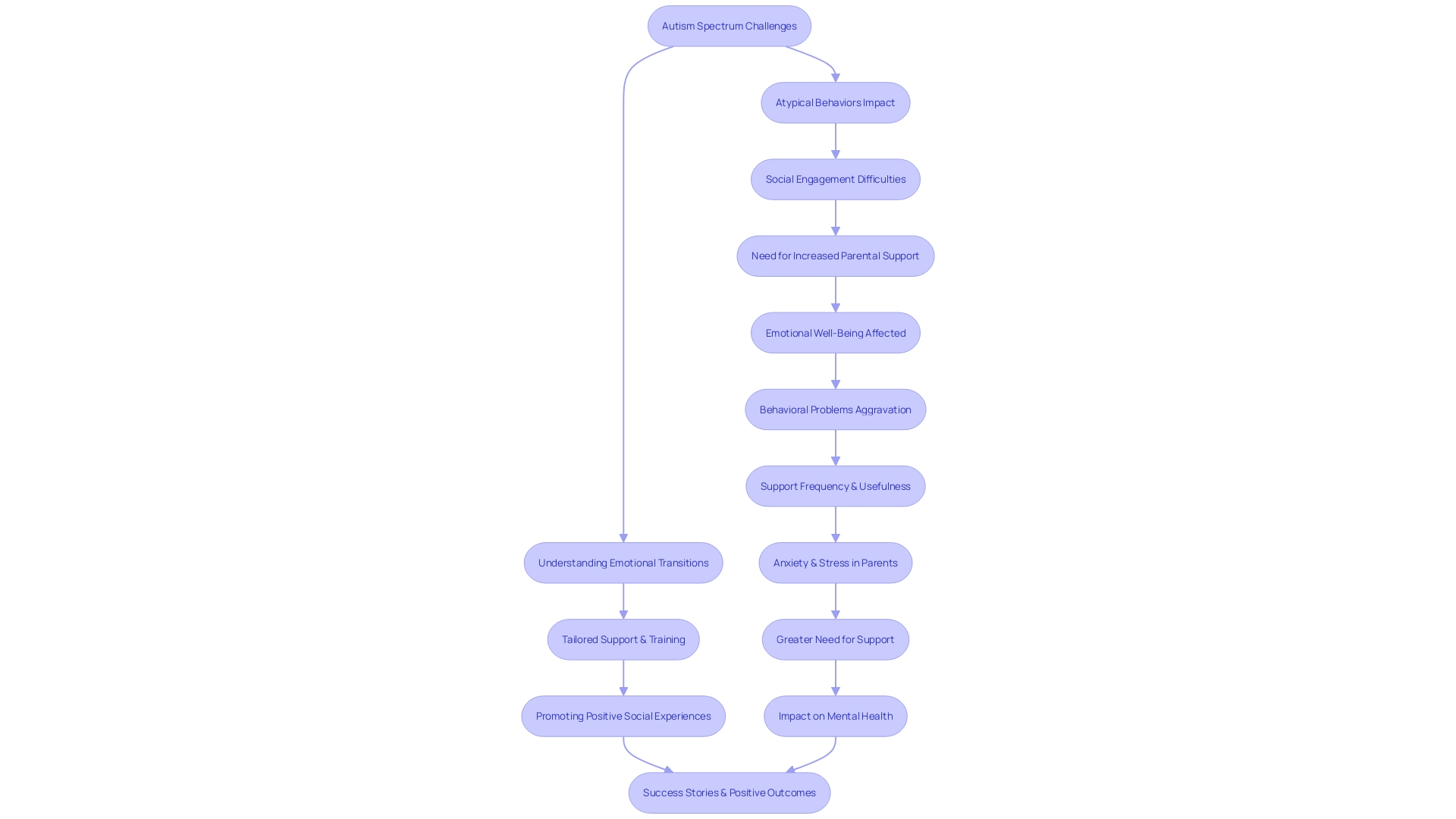
Nonverbal Communication
Understanding the nuances of nonverbal communication is a pivotal component in assessing autism spectrum disorder (ASD). For people on the spectrum, understanding and conveying emotions through gestures, facial expressions, and eye contact can be challenging. This often results in a disconnect when it comes to social interactions, where nonverbal cues play an integral role. Research, such as a study in the Journal of Autism and Developmental Disorders, demonstrates that individuals with ASD may engage in less eye contact, which is a critical aspect of nonverbal exchange. Such discoveries highlight the significance of acknowledging these communication obstacles throughout the diagnostic procedure to guarantee that individuals on the autism spectrum obtain the assistance and comprehension they require.
Exploring the difficulties in nonverbal communication isn't just academic; it has real-world implications. For example, the legal system in New South Wales, Australia, recognizes the communication barriers faced by individuals with autism spectrum disorder. It enables intermediaries to assist in communication for vulnerable people, emphasizing the necessity for customized approaches to support transparent and precise exchanges. This approach exemplifies the broader necessity of adapting environments and interactions to better suit the communication styles of those on the autism spectrum.
Furthermore, a research conducted by Professor Vikram Jaswal from the University of Virginia explores the literacy of nonspeaking autistic people. By utilizing a distinctive approach similar to the game Whac-a-Mole, the research team found that these people do react to language in ways comparable to literate, non-autistic individuals. Such discoveries defy the traditional perspective that speech and language are inseparable, unveiling that non-speaking persons possess the ability for symbolic thinking and, consequently, language.
Statistics from the CDC indicate that autism impacts up to 1 in 36 people, underscoring the importance of early diagnosis and intervention. By acknowledging and comprehending the distinct communication challenges faced by people with ASD, we can provide them with the appropriate resources and opportunities to thrive. This is further reinforced by ongoing research, including a grant-funded project which aims to uncover the shared mechanisms at the neural circuit level that could explain sensory hypersensitivities in ASD—a common trait that influences how individuals process sound and language.
In summary, nonverbal communication is a complex and essential facet of interaction that can present significant obstacles for those with ASD. By integrating research findings and adapting communication strategies, we can create a more inclusive society that facilitates better understanding and support for individuals with autism.
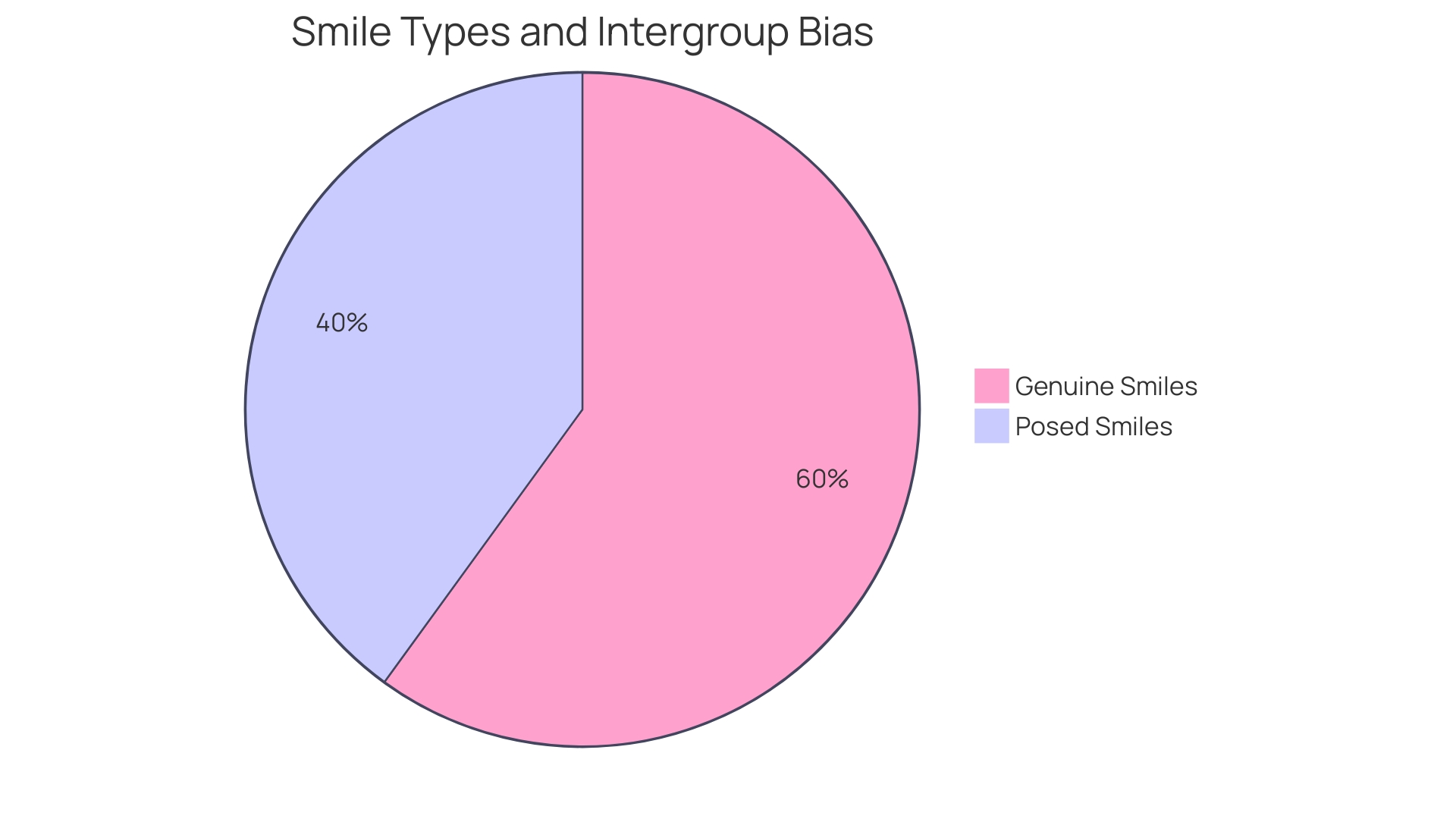
Developing and Maintaining Relationships
Social interaction and the development of relationships are essential elements of the human experience. For people on the autism spectrum, maneuvering through these social landscapes can be especially demanding, frequently because of a nuanced and distinct comprehension of social cues and the intricacies of establishing connections. The acknowledgement of these obstacles is not simply an observational remark; it is a vital aspect of diagnosing and supporting individuals with autism. Dr. David (Dan) R. Offord's poignant reflection on the necessity of a fair race for all children, including those with disabilities, underscores the importance of recognizing the distinct contributions and needs of autistic people. This equitable approach fosters a supportive environment that can significantly reduce stress and bolster mental health.
Recent studies, like those carried out by the Center for Discovery, have utilized artificial intelligence to predict behaviors in autistic people, improving our capacity to proactively assist them. Furthermore, the work by Professor Kenkichi Takase and Professor Eiichi Nojiri expands our understanding of autism spectrum disorder (ASD) by exploring the brain's intricate connections, building on the foundational theories of psychologist Donald Olding Hebb.
Despite the increase in autistic young adults pursuing higher education, their graduation rates remain disproportionately low, a reflection of the barriers that persist in academia and beyond. It's not only about granting entry; it's about guaranteeing achievement by comprehending and accommodating the particular requirements of people with autism. As they transition into adulthood, autistic people often face additional psychological and societal challenges, and the therapeutic needs for conditions such as anxiety or depression are not markedly different from those of the general population. Yet, many autistic adults find themselves turned away by practitioners ill-equipped to address their unique circumstances. With the right approach and minimal additional training, practitioners can extend their care to include autistic patients effectively.
The path to understanding and supporting the autistic community is one that requires continuous learning and adaptation. By cultivating an environment that values the strengths and respects the challenges of autistic individuals, we can create a society that not only recognizes but actively facilitates their ability to thrive across all stages of life.
Restricted and Repetitive Behaviors
The intricacy of the disorder on the spectrum is additionally revealed when investigating the second core diagnostic criterion: restricted and repetitive behaviors. These behaviors are not uniform but diverse, ranging from repetitive physical actions to an unwavering adherence to routines, deep-seated interests, or unusual responses to sensory input. For instance, repetitive movements may include hand-flapping or rocking, while sensory peculiarities can manifest as either hypersensitivity or indifference to environmental stimuli. Rigid thinking patterns are also indicative, such as a child's insistence on following specific schedules or routines, revealing the nuanced nature of ASD. Overall, these behaviors are pivotal in discerning the distinctive traits of autism, providing a clearer picture of the condition for both parents and professionals.
Recent findings, such as those from Holland Bloorview's MOBSE framework, underline the importance of considering medical and nutritional factors that might influence behaviors. People with autism, for instance, are said to be four times more prone to gastrointestinal problems, which can greatly impact behavior. Understanding these underlying medical concerns is vital in accurately assessing and providing support for individuals with autism.
Moreover, current research emphasizes the need for support goals that are 'neurodiversity affirming', valuing the child's inherent strengths and interests rather than attempting to 'normalize' them. This perspective aligns with the broader, evolving understanding of ASD as a spectrum, where each person's experience is unique and deserving of a tailored approach that respects their neurodiversity.
Furthermore, modern research and scholarly dialogues, like those on 'Autistic inertia', offer understanding into the difficulties experienced by people with autism in shifting between activities or starting tasks, further shedding light on the range of behaviors linked to ASD.
In light of these nuanced understandings, it is clear that recognizing and interpreting the full range of restricted and repetitive behaviors is essential in providing appropriate support and interventions. Such an approach not only aids in the accurate diagnosis of autism but also fosters an environment that respects and supports the unique needs and experiences of those on the spectrum.
Repetitive Stereotyped Movements
Autism spectrum disorder (ASD) presents with various behavioral indicators, one of which includes repetitive stereotyped movements (RRBs). These actions, such as hand flapping, body rocking, or repetitive vocalizations, are not just peculiar habits but have deeper neurological implications. They can reflect a person's attempt to regulate sensory input and maintain a state of equilibrium in the face of overwhelming stimuli. For example, the idea of 'inertial rest' and 'inertial motion,' as explained by Martijn Dekker and acknowledged within the Autistic community, can manifest as a person becoming 'stuck' when overwhelmed or persisting in an activity to maintain predictability and control.
The importance of understanding these behaviors extends beyond simple observation, as they can be integral to early identification and diagnosis of ASD. Current research, including cutting-edge genetic studies, suggests that these repetitive behaviors may be linked to underlying neurodevelopmental processes that impact motor control and emotional regulation. For example, studies have found that RRBs often persist beyond the developmental period when they typically decline, which could indicate a delay in the development of more complex cognitive mechanisms for emotional and behavioral self-regulation. This can be particularly evident in neurodevelopmental conditions such as ASD.
Moreover, recent technological advancements have provided insights into how RRBs may be connected to variations in brain structure. Innovations like transport-based morphometry (TBM) have revealed that certain brain structure patterns may predict genetic variations known as 'copy number variations', which are frequently linked to a neurodevelopmental disorder. This connection between genetics, brain structure, and behavior underscores the complexity of ASD and the need for comprehensive diagnostic approaches.
Recognizing these movements as possible indicators for early intervention can have a significant impact on the quality of life for people with ASD. Identifying the patterns and comprehending their implications enables providing more customized support and interventions that address the distinct sensory and regulatory requirements of individuals on the spectrum.
Rigid Behaviors and Thinking
Autistic individuals often exhibit patterns of behavior and thought that distinguish them from neurotypical peers. These can include a marked preference for consistency, a resistance to alterations in routine, and challenges when transitioning between activities—a phenomenon sometimes described as 'rigid' behaviors and thinking. Such patterns are not mere quirks; they represent fundamental aspects of the spectrum associated with autism. A comprehensive understanding of these behaviors is essential, especially in light of recent shifts in autism research methods and perspectives on neurodiversity.
In the context of evolving research, the importance of understanding these behaviors becomes even more evident. Studies have increasingly embraced randomized-controlled trials rather than quasi-experimental designs, aiming to provide robust evidence for interventions that cater to the needs of people with autism. These interventions, as described in a survey involving autistic adults, parents, and supporters, are starting to prioritize neurodiversity affirming goals. This approach celebrates the unique abilities and passions of each person, instead of trying to 'fix' them.
Furthermore, there is increasing acknowledgment among researchers, as highlighted by Assistant Professor Mark Ho, of the necessity for interventions to tackle not just the autistic person but also the surroundings and support systems encompassing them. This aligns with the autistic community's views, where the term 'inertia' has been adopted to articulate the experience of being 'stuck' or 'frozen' when initiating tasks, despite the motivation to act.
The paradigm shift towards understanding and affirming neurodiversity is further emphasized by the words of one parent, who advises against letting autistic children believe that there is something wrong with them due to their diagnosis. This point of view is backed by the resilience and adaptability demonstrated by people on the autism spectrum, who develop compensatory tactics to navigate a world that frequently conflicts with their innate way of existing.
Statistics from an online parent survey reveal that behavior problems in individuals with Autism Spectrum Disorder may intensify under stress, such as during the pandemic, underscoring the need for interventions that are flexible and responsive to the unique challenges faced by this population.
In summary, a deep understanding of the 'rigid' behaviors related to autism is not just about identifying a set of characteristics; it is about appreciating the complex interplay between a person's neurology and their environment, and fostering support systems that affirm and harness the strengths of individuals with autism.
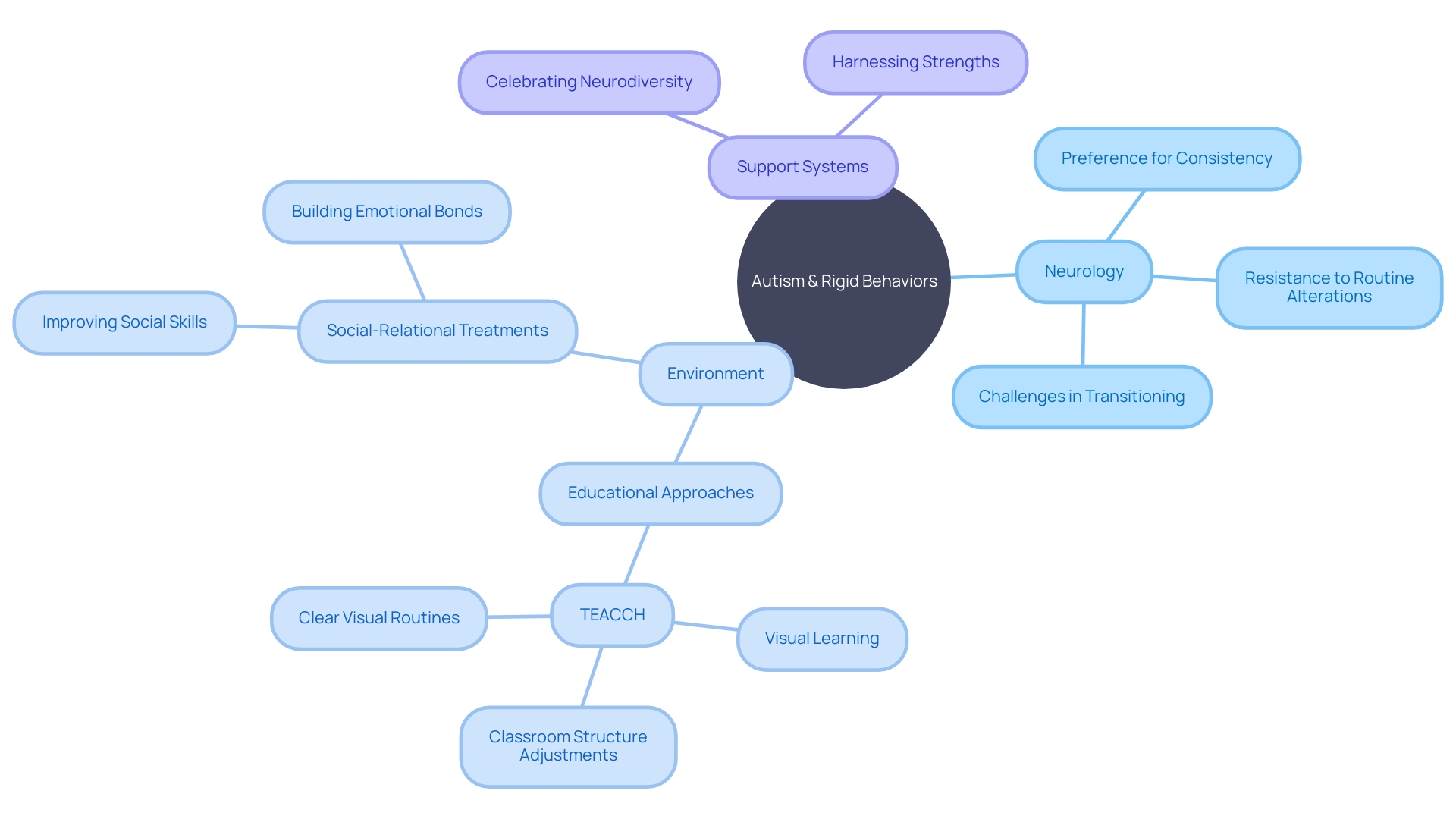
Intense Fixed Interests
One of the distinctive characteristics of autism spectrum disorder (ASD) is the development of intense and focused interests in specific subjects or objects, often referred to as circumscribed interests. These interests can dominate an individual's thoughts and conversations, serving as a hallmark trait in the diagnosis and understanding of ASD. Research has synthesized findings from various fields, identifying patterns such as the prevalence of ASD in certain populations, and the social and relationship difficulties that can accompany the condition, potentially leading to isolation or engagement with extreme ideologies. Further, these circumscribed interests can sometimes intersect with topics like mass murder or weaponry, highlighting the need for professional training to address these complexities. A genetics-first approach has been suggested to potentially revolutionize the understanding and treatment of a neurodevelopmental disorder, given its strong genetic basis. This method, employing inventive mathematical modeling, could unveil brain structure patterns associated with genetic variations connected to a specific neurological condition. As we explore further into the intricacies of ASD, it becomes evident that these specific interests are not just pastimes; they serve as a glimpse into the cognitive and social aspects of people with ASD, offering valuable observations for personalized assistance and intervention approaches.
Sensory Processing Issues
Individuals with ASD may perceive the world differently due to sensory processing challenges. Sensory hypersensitivity leads to an intense response to environmental cues like bright lights or loud noises, which can be overwhelming. Conversely, hyposensitivity might result in less reaction to stimuli, such as not noticing smells or textures that others find strong or distinctive. The interplay of these sensitivities is not only integral to understanding the ASD diagnosis but also to tailoring interventions that enhance daily functioning and quality of life.
For instance, an innovative approach involving augmented reality (AR) technology has been prototyped to assist those with tactile sensitivities during dental visits. By transforming tactile sensations into visual and auditory cues, individuals with ASD can navigate potentially distressing experiences, like the feel of a dental chair or the vibration of dental tools, with more comfort.
Accommodating sensory needs is crucial, as the prevalence of ASD is on the rise, now affecting 1 in 44 children. The condition is more commonly diagnosed in males, with a ratio of three to four times higher than females. Understanding sensory issues is not only crucial for diagnosis but also for improving the broader health outcomes of those with a condition, who face increased risks of co-occurring conditions and higher healthcare expenditures.
Sensory sensitivities encompass a broad spectrum, including reactions to sights, sounds, tastes, smells, balance, touch, proprioception (awareness of body position), and interoception (awareness of internal sensations). Describing these experiences can be challenging, particularly for children who lack the vocabulary to articulate their feelings. These sensory processing issues are so integral to the condition that they are included in its diagnostic criteria.
Recent research underscores the importance of focusing on the auditory system, where hypersensitivities are prevalent and significantly impact life quality. For some, environments like shopping malls or public transport can become arenas of sensory overload due to the inability to filter out excessive noise. Studies suggest a potential hyperactivity in the brain as a mechanism behind such hypersensitivities, highlighting the need for further investigation in this area.
Dr. Temple Grandin, a well-known supporter and individual with sensory sensitivities, emphasizes the importance of creating environments that consider sensory sensitivities, such as ensuring the use of non-flickering LED lights. Such considerations in design can make significant differences in the lives of those with a neurodevelopmental disorder, allowing them to engage more comfortably with their surroundings.
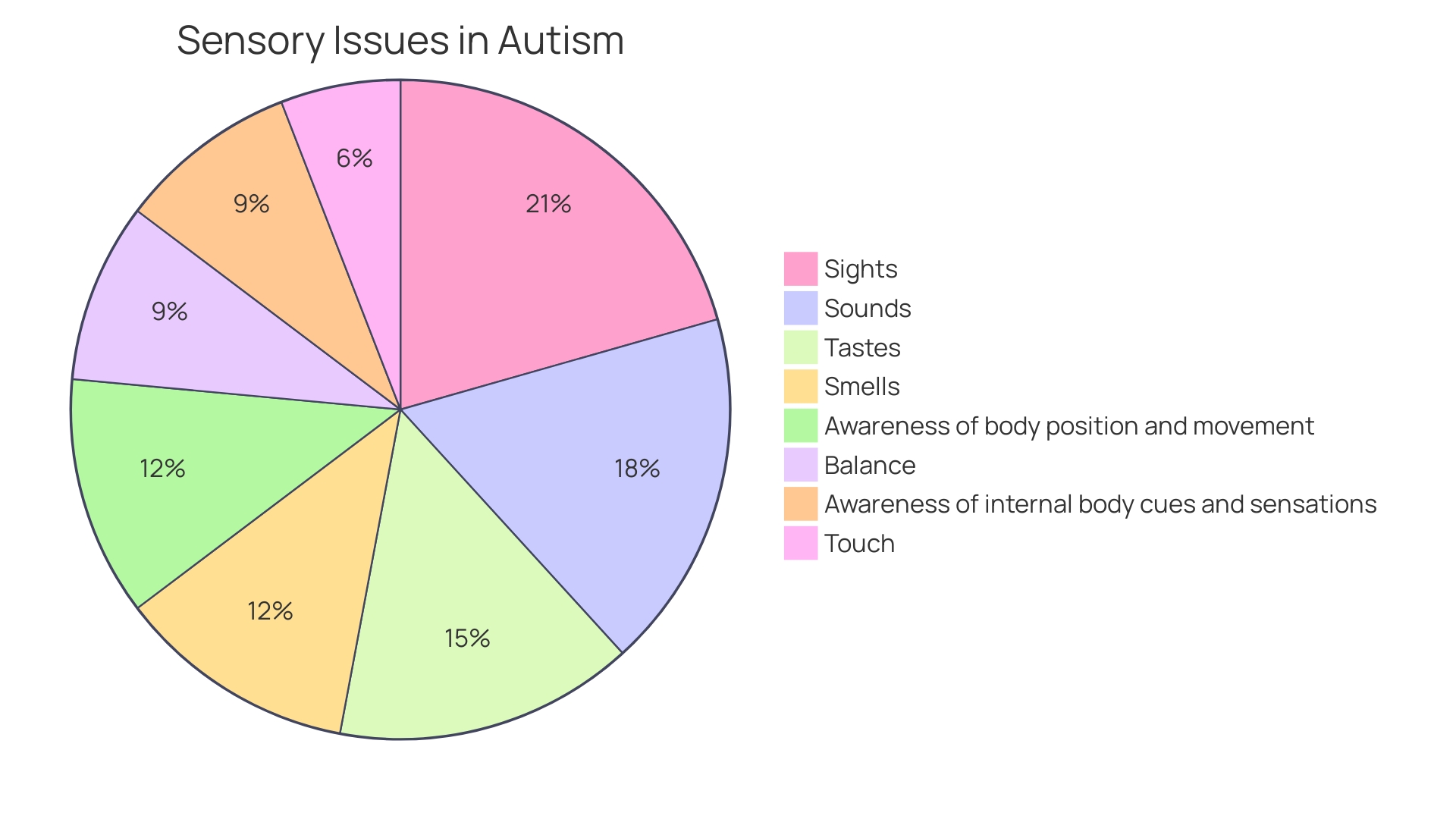
Presence of Symptoms in Early Development
The early years of a child's life are defined by a sequence of developmental milestones, which serve as checkpoints of emotional, interpersonal, cognitive, and physical growth. These milestones, such as the first smile, babbling, and first steps, provide a framework for identifying typical development rates and are pivotal in detecting early signs of ASD spectrum disorder. For instance, children with ASD may exhibit distinct differences in social communication and interaction, which can become apparent as they reach various developmental stages.
Professionals, including neurodevelopmental pediatricians and child neurologists, use a combination of tools and observations to diagnose ASD. While parents' descriptions of their child's development are vital, the American Psychiatric Association's DSM-5 criteria and professional behavioral observations are equally essential. Machine learning models, such as Aut Media derived from the SPARK database, have demonstrated encouraging outcomes in identifying patterns that forecast developmental condition with up to 80% precision in children below the age of two.
Early intervention is key to supporting children with ASD. Campaigns such as 'Talking is Teaching' and programs like Vroom and Zero to Three offer resources to enhance early development. Moreover, employing uncomplicated language, communication tools, and extra time to process information can greatly assist daily interactions with children affected by autism. If developmental delays are observed, seeking help from specialized services and speech and language therapists is crucial. As new research continues to emerge, staying informed about the latest findings, treatments, and therapeutic approaches is imperative for the optimal support of children with ASD.
The Diagnostic Process
Understanding the unique behaviors, developmental history, and observations from those closest to them is the starting point for navigating the complexities of autism testing. The process is not just about obtaining a diagnosis; it's about unlocking access to a spectrum of resources that can profoundly influence a person's ability to thrive.
Autism, as defined by the American Psychiatric Association's Diagnostic and Statistical Manual (DSM-5), manifests through persistent differences in communication, social interactions, and often includes restricted, repetitive patterns of behavior. Such variations in behavior are as diverse as the people themselves, with the condition impacting individuals differently and to varying extents.
The community's perspective on testing varies, with many embracing self-diagnosis in light of the challenges associated with medical testing. For some, an official diagnosis may not alter the support they need. However, statistics reveal a different narrative, with 1 in 36 individuals estimated to be on the spectrum of autism, highlighting the importance of accessible and accurate diagnostic tools.
Advancements in the field are emerging, like the AutMedAI model, which showcases an accuracy of nearly 80 percent in identifying autism in children below the age of two. This tool, developed through machine learning techniques, analyzes a combination of 28 different parameters without extensive assessments and could revolutionize early diagnosis.
Moreover, organizations like The Autism Community in Action (TACA) and NeuroQure are making strides in providing timely support and interventions. Research consistently supports that early behavioral therapy can significantly improve outcomes, emphasizing the urgency for a diagnostic tool capable of early identification of ASD.
Understanding the spectrum and embracing the advancements in diagnostic approaches can empower parents and professionals to navigate the steps towards a comprehensive evaluation and the subsequent support that a diagnosis can facilitate.
Importance of Early Diagnosis and Intervention
The quest for understanding Autism Spectrum Disorder (ASD) has led scientists to focus on the crucial window of early childhood development. ASD is marked by challenges in social interactions, communication barriers, and specific patterns of behavior. With only a fraction of children diagnosed before the age of five achieving independence in adulthood, early diagnosis is not just beneficial, but essential for enhancing lifelong outcomes. Groundbreaking research is now unraveling the intricate dance between genetic predispositions and environmental influences in the development of ASD, opening up new frontiers for early detection and intervention.
Innovative methods, such as observing how children and their parents engage during block-play, are providing profound insights into cognitive development. When combined with sophisticated deep learning models, these observations can pinpoint early signs of ASD more accurately than traditional screening methods.
Additionally, cutting-edge techniques like transport-based morphometry are unlocking the genetic underpinnings of ASD by revealing brain structure patterns that correlate with genetic variations. This genetics-first approach could revolutionize our understanding and treatment of a neurodevelopmental disorder, offering hope for earlier and more precise diagnoses.
Statistics paint a stark picture: the earlier we identify and support children with ASD, the more they thrive. Current diagnostic tools, however, show limitations, particularly in reflecting the true spectrum of ASD across different demographics. There is a pressing need for more nuanced, objective tools that can bridge the gap in early diagnosis and reduce disparities in access to interventions.
The path to early diagnosis poses certain difficulties, yet the potential benefits for individuals with ASD and their families are tremendous. By harnessing the power of technology and deepening our understanding of ASD's complexities, we can pave the way for a future where every child has the opportunity to reach their full potential.
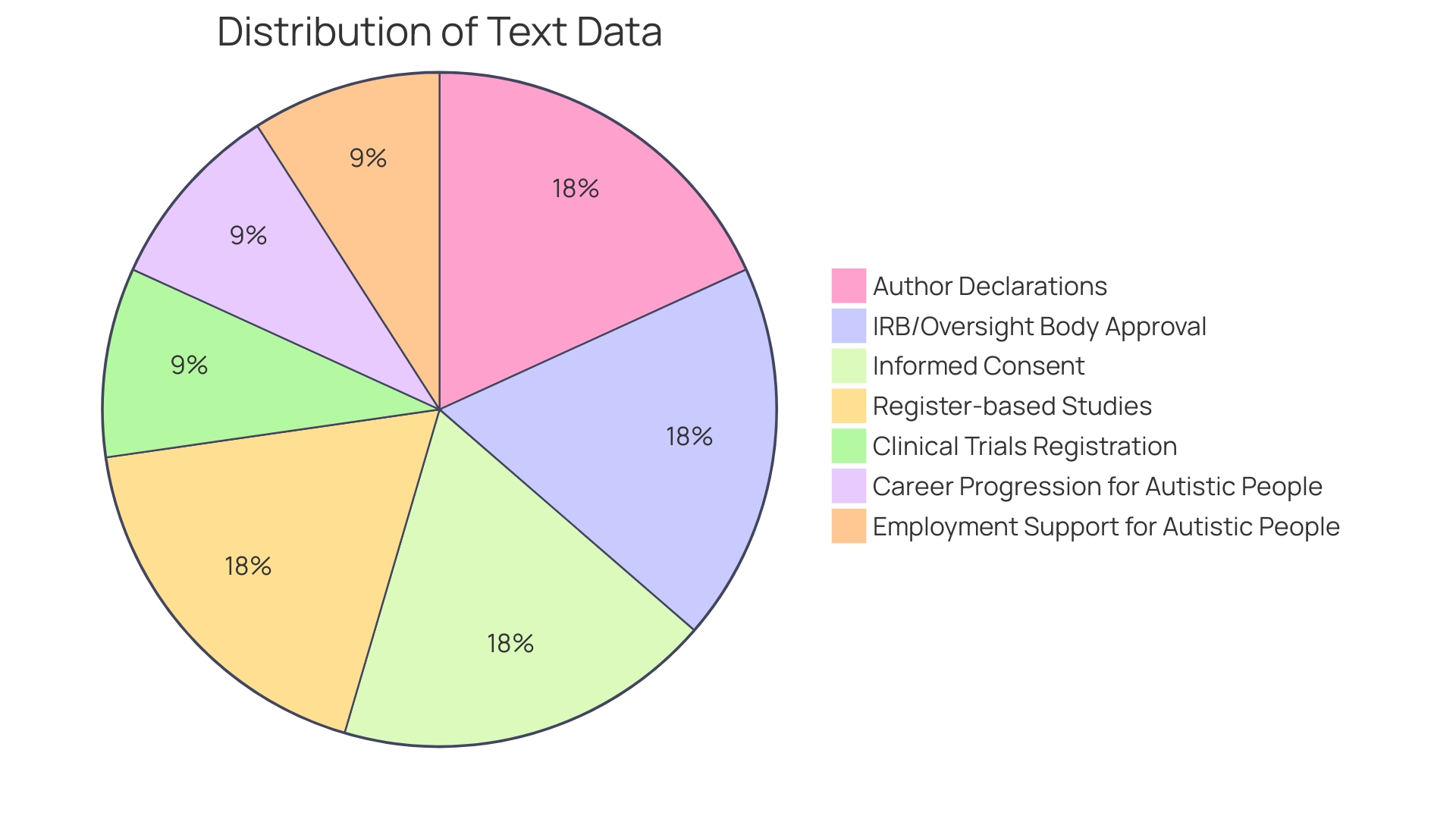
Challenges in Diagnosing Autism Spectrum Disorder
Navigating the complexities of autism spectrum disorder (ASD) diagnosis requires an understanding of its multifaceted nature. Variability in symptoms, influenced by cultural and personal factors, demands a thorough and comprehensive approach to assessment. By leveraging a combination of parental insights into a child's developmental history and professional observation, healthcare providers can align with standardized diagnostic criteria, such as those outlined in the DSM-5, to accurately identify ASD.
Technological advancements, like machine learning models, are enhancing the precision of early diagnosis. For instance, the Media model, with an impressive 80% accuracy rate for children under two, utilizes a set of 28 parameters that can be gathered without extensive testing, offering hope for more timely interventions.
Organizations like The Autism Community in Action (TACA) underscore the importance of early treatment, which is supported by research showing better outcomes with early behavioral therapy. NeuroQure, through its innovative approaches, aims to address the diagnostic delays that families often face, with the potential to offer assistance soon after birth.
As the concept of neurodiversity gains traction, it reframes the conversation around conditions like ASD, advocating for an acceptance of neurological differences and reshaping scientific and medical perspectives. This evolving conversation encourages additional investigation into diagnostic approaches that honor and empower people and their families on their journey with ASD.
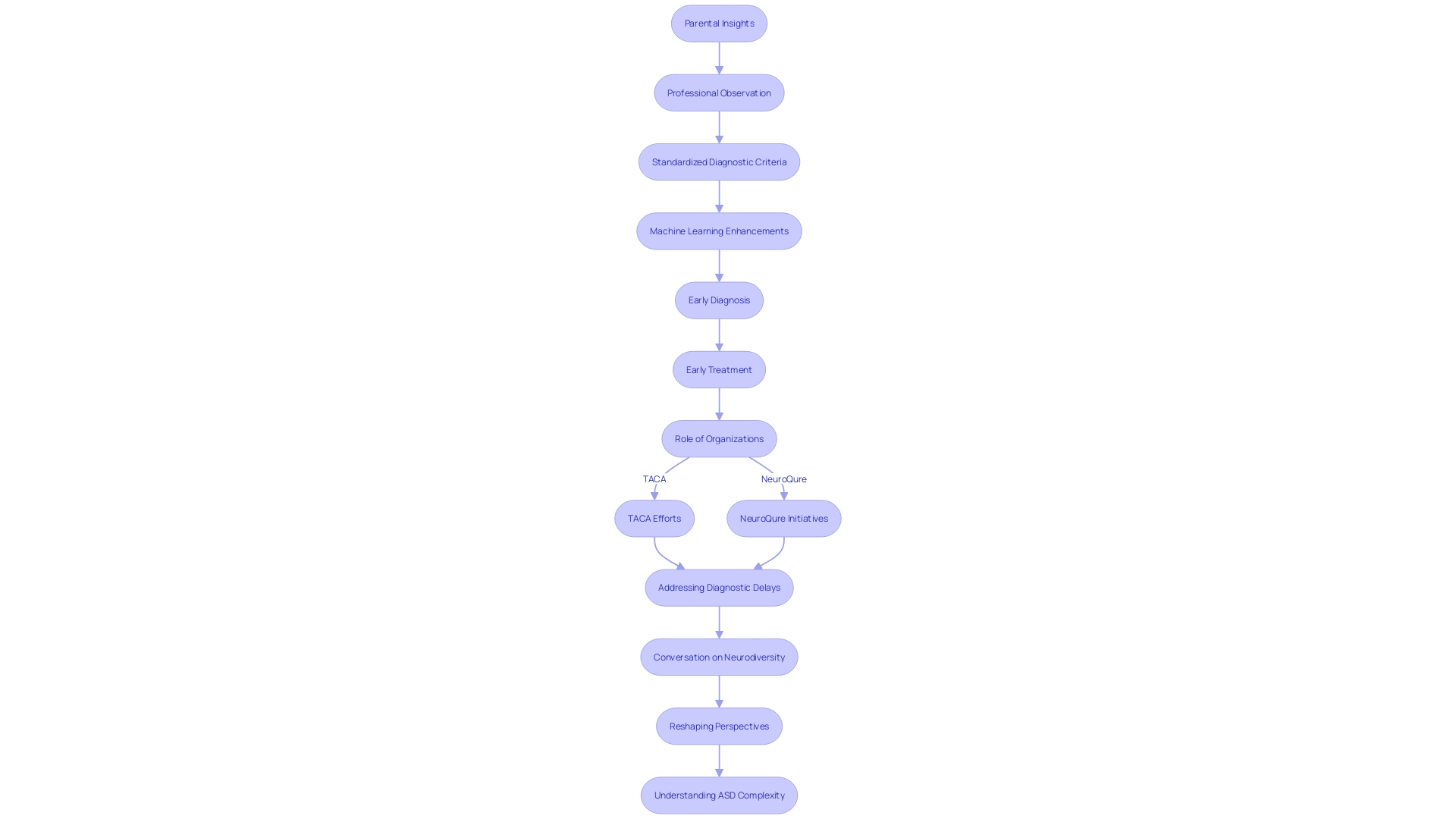
Criteria for Differentiating Autism Spectrum Disorder from Other Conditions
Comprehending the intricacies of the spectrum disorder (ASD) is vital for the accurate identification and support of affected individuals. Distinct features set ASD apart from other developmental disorders, which is essential for clinicians to provide targeted interventions. For instance, a study in the Journal of Personalized Medicine involving 4-year-old dizygotic twins diagnosed with level 3 severity ASD highlighted the importance of personalized, multidisciplinary approaches to reduce ASD symptoms. This case illustrates that even siblings with similar genetic backgrounds can present varying characteristics and needs in terms of ASD support.
Recent studies, like the AutMedAI approach, which demonstrates an 80% precision in identifying children under two with the condition, emphasizes the importance of early identification. This model, developed from a large dataset and incorporating various parameters available before 24 months of age, promises to revolutionize early intervention practices.
Moreover, Beth Lambert, an advocate for children with ASD, emphasizes the existence of hope and resources for affected families. Her dedication to educating parents on managing ASD underscores the community's push toward empowerment and self-reliance. The rising occurrence of this developmental disorder further emphasizes the need for available and precise diagnostic tools, as timely intervention can greatly improve the quality of life for individuals on the spectrum and their families.
Understanding ASD is not just a medical concern but also one of embracing neurodiversity. The concept of neurodiversity acknowledges the wide range of brain functions, recognizing that people with ASD, ADHD, dyslexia, and dyspraxia, among others, have unique strengths and challenges. This perspective is reshaping societal and medical approaches to autism, promoting inclusivity and support tailored to individual experiences.
Conclusion
In conclusion, accurate diagnosis of autism spectrum disorder (ASD) is crucial for providing tailored support to individuals with autism. The diagnostic criteria offer a consistent approach to recognizing the distinctive traits of ASD, ensuring early and accurate diagnosis that can be life-changing.
Research shows that a combination of genetic and environmental factors contributes to autism, emphasizing the importance of evidence-based understanding. The diagnostic process is evolving with discussions on refining criteria and exploring advanced technologies like machine learning.
Understanding the core characteristics of ASD, such as social communication challenges, is essential for guiding parents and caregivers. Recognizing and leveraging the strengths of individuals with autism creates inclusive and supportive environments.
Restricted and repetitive behaviors, intense fixed interests, and sensory processing issues further contribute to the complexity of ASD. Recognizing and interpreting these behaviors is crucial for tailoring interventions.
Early diagnosis and intervention are vital for improving outcomes. Embracing advancements in diagnosis and staying informed empower parents and professionals to navigate the process and provide necessary support.
In conclusion, accurate diagnosis and understanding of ASD criteria are essential for providing tailored support. By embracing advancements and staying informed, we can create a society that values and supports individuals with ASD, fostering full and enriching lives.
Take action now and prioritize early diagnosis and intervention for better outcomes!




